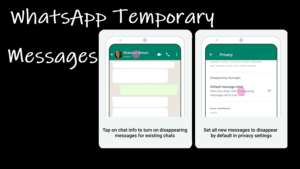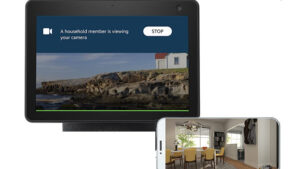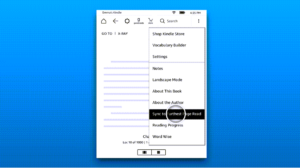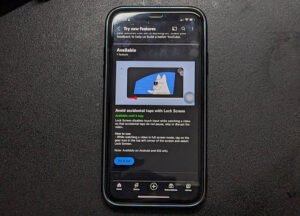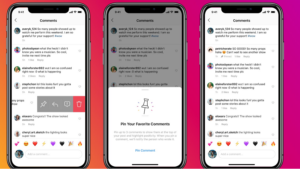Last updated on August 1st, 2024 at 10:30 am
Google, known for criticizing Apple’s perceived reluctance to adopt a universal messaging standard, is finally seeing its efforts come to fruition. Apple has agreed to integrate rich communication services protocol into its messaging scheme. This support will resolve the widespread issue of compatibility in text messaging between iPhones and Android. Continue reading as we explore this topic and discuss what changes it brings to those green or blue message bubbles.
Apple’s Past Resistance to Rich Communication Services protocol
Previously, dismissing to adopt the RCS standard, Apple’s CEO, Tim Cook, had sarcastically advised a reporter to solve texting issues between him and his Android-wielding parent by making them switch to an iPhone. The video of the media conference, including the inquiry about Apple adopting the RCS standard, is on YouTube, with the relevant question appearing at the 1 hour, 17-second mark.
Notably, Google launched a website called “Get the Message” to encourage public pressure for Apple to embrace modern texting standards, emphasizing the outdated feel of exchanging messages between iPhones and Androids akin to using a pager from a bygone era.
Besides, the broad support for RCS to replace SMS’s role as a universal language has played a significant role in this campaign. Also, the regulatory pressure from the European Union’s Digital Markets Act (DMA) has been influential in prompting Apple to openly endorse the modern communication standard. The DMA rules require major companies to ensure the interoperability of their services with other platforms.
Currently, when iMessage users are exchanging texts with people who are off the service, messages fall back to the redundant SMS and MMS standards but with Apple being pressed to get in line with the modern communication standard, we’ll see iMessages falling back to the RCS standard instead of SMS. This will offer a much better interoperability experience.
A deep dive into RCS (Rich Communication Services) Messaging
RCS is a new step in the evolution of text messaging. Unlike the traditional Short Message Service (SMS) or even more advanced Multimedia Messaging Service (MMS), RCS chats host many advanced features.
The first signs of it being seen as a replacement for SMS and MMS were conceived by the GSM Association in 2008 amid the peak of pay-per-message SMS texting but carrier interest soon waned with the rise of unlimited messaging and the dominance of chat apps.
Google rekindled interest in RCS in 2015 through the acquisition of Jibe, fully embracing it in 2018 after discontinuing Google Allo. Now integrated into the Messages app on most Android phones, RCS offers benefits akin to Apple’s iMessage, including read receipts, high-quality media sharing, Wi-Fi chat capabilities, typing indicators, location sharing, and fun reactions.
These features enhance the messaging experience alongside iMessage rather than replacing it, providing a more enjoyable chat experience with Android’s green bubble friends.
How to get started with RCS messaging?
For a smooth transition of text messages to the new protocol, both parties must have RCS enabled. Ensure both you and your partner have an Android phone with Google’s Messages app installed, set as the default text messaging app. Additionally, consider setting up Messages for the Web for convenient text exchange from your computer.”
On Google Pixel:
Open the Messages app. Tap the profile picture at the top right.
Select Messages settings.
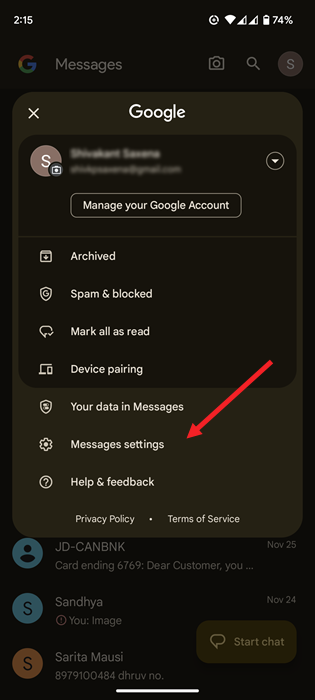
Under the Settings section of Messages, tap the General option.
Select RCS chats.
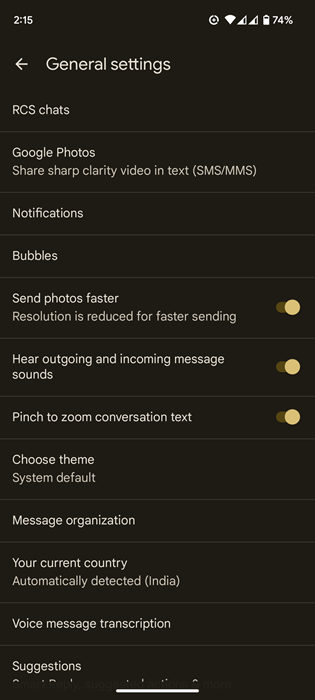
Slide the switch next to Turn on RCS chats to the On position.
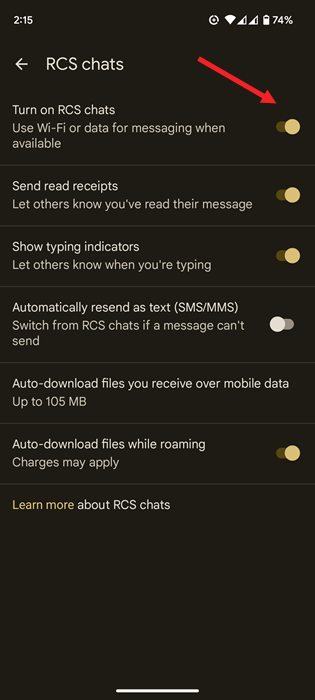
Here, you can toggle other indicators like the automatic resend as text (SMS/MMS) if chat fails, the option to send read receipts, and more.
RCS chat faced challenges with carrier-specific support and device restrictions initially, limiting its widespread acceptance. However, the introduction of Universal Profile was a pivotal moment, expanding RCS features across different carriers.
Though its impact was limited due to uncertain accessibility, integration of Google’s RCS Chat into Messages, significantly addressed these limitations, offering universal access to basic RCS features, and allowing RCS to realize its full potential.
The arrival time for RCS standard support on iPhone remains unknown for now, and Apple has not provided details on which iOS update might incorporate RCS support. It is likely that Apple will introduce this change through an unspecified software update, with carriers responsible for its adoption.
Notably, End-to-end encryption (E2EE) was not originally a foundational aspect of RCS specifications. We believe, that if Apple embraces RCS, it will implement the security independently in collaboration with the GSM Association, diverging from Google’s proprietary version. The ongoing green/blue bubble distinction will persist, as RCS messages will appear in green, similar to SMS and MMS messages.


